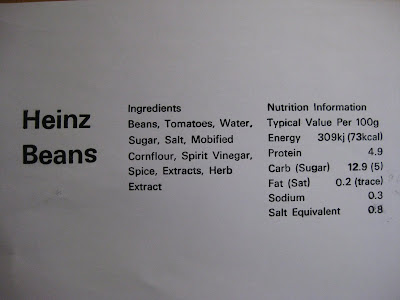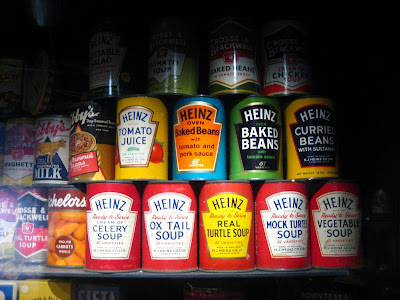The technician at letterpress advised me to use font type Univers Medium as oppose to Arial because it was more neutral to the human eye. The ideal font size for Univers Medium for my product was 14/16 points but not all letters were available and so I was forced to choose between point size 12 or 18. If I was to go down to point size 12 then this creates enough space for me to move and play around with the composition but will take away the element of having large print font on labels. And so I chose point size 18 and thought I will have sacrifice any spacing or words if neccessary. Because of the nature of the point size the width of the label increased to 4cm more as the label was divided into sections of 3, each being 22 picas width long. Knowing that the label would be larger than antisipated I thought I would carry on and alter any neccessary changes later. I did also had to remove away the "(51%)" and "(33%)" seen in the ingredients to be able to have enough room. This was when I realised that I have to work with a limited and restricted area and will still need to play around with the composition a bit more. In the "Heinz Beanz" logo I has to replace the "z" with a "s" as I was limited to only one z, but I hope that by the time I print my final design the z will become available.
When it came to printing I'd realised that there were some letters which were up-side-down such as the "s" in "Beans" and the "n" in "Heinz" and the "d" in "Modified"- proof checking through printing is a very vital stage. After printing several copies onto newsprint and photocopy paper I took them away hoping that I can later cut up the words and reconstruct them in a better composition (since Univers font is not available on my computer nor is the font size).
I think the letterpress will be a main focus on the development because I'm able to get a clear print for the letters but my only worry is the font size and how this has changed a bit of my composition. I did thnk of having the letters pressed to create a surface but I wouldn't think this would make the reading clear for a visually impaired person as shadows will be formed distorting the sentence.
I also asked the technician whether braille could be created if I imprinted it onto the paper, but he advised it would be very difficult as you'll have to construct each full stop together and it will be a long process. He said that a person a few years back created braille using a back of a paint brush and poking into the paper; I have experimented with a pin to create braille and it formed perfectly well. I remember when I went to the MertonVision Centre there was an instrument to construct braille in a grid and perhaps I could try buy/reconstruct the instrument for labelling. If I was to do braille I would do it for the three titles of "Heinz Beanz", "Ingredients" and "Nutrition Information", as braille uses alot of space on the paper.


















